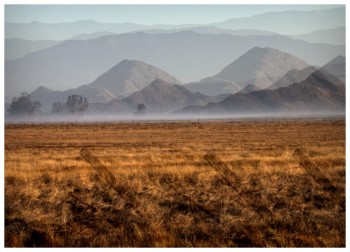I am not young enough to know everything. Oscar Wilde
Someone Hung a Huge Piece of Gauze in front of the sun
Hidden under gloomy overcast skies are deeply saturated colors and soft diffused lighting. Overcast skies are defined as 90% or more cloud cover. Avoid large sections of gray sky in your shots because it will never be anything else and look for colorful subjects instead.
Low Contrast Subdued Lighting Video
Artist James Nares made a video of Manhattan Streets from a car in subdued light. His mesmerizing slow motion video of pedestrians can also be seen at the Metropolitan Museum of Art. http://www.metmuseum.org/en/exhibitions/listings/2013/street
Please enable flash to view this media. Download the flash player.
Analyze the Light Before you Shoot
Photography is painting with light, so understand where the light is coming from. For example, even on an overcast day, if you are shooting people when the sun is high in the sky, it will create bags under their eyes and shadows over their eyes. Try to avoid shooting between the dreaded hours of 10 and 3 or 4, or use your fill flash for portraits to fill in shadows and even out the light. Try Side light to bring out interesting details and front light for more even lighting. Choose back light for dramatic silhouettes and for old people who want to disguise their age in dark shadows.
Old age comes at a bad time. Sue Banducci
Watch the Clouds Drift By
Even if you don’t think that life is a cloud drifting by, you can enjoy photographing them.

Cloudy day photography will benefit from some post processing in your computer because of low contrast flat light on cloudy days. An alternative way to add contrast is to carry around a sheet of red or orange acetate to hold in front of your camera lens while shooting. A better idea is to download a free photo editing program onto your computer like Google’s Picasa or use the Apple iPhoto program to enhance your photos. I processed this photo in Picasa after shooting it underexposed by -1/3. That way, the highlights in the clouds didn’t completely blow out to white. Then, I cropped the photo, changed it to black and white, applied the Holga filter to darken the edges, faded the filter, and added some contrast. Voila, it only took about 5 minutes. If you don’t want to spend that much time on your pictures after you shoot them, consider some alternatives: 1) Stay indoors and study your camera instruction manual (Exposure compensation) while waiting for a sunny day, 2) Take a nap, (see note below), 3) Use a smartphone with quick and easy photo apps that take less than a minute to make your photo “pop”.
A Note on Alternative #2— Famous British Actress Tilda Swinton is currently taking a nap at the New York’s Museum of Modern Art in a performance piece entitled “The Art of Napping.” We old ones could shed some light on the subject, but prefer to stay in the background for now.
Next Friday some tips on shooting in the shade
No hats or sunscreen required
Copyright© 2013, Marlene Hutchison













